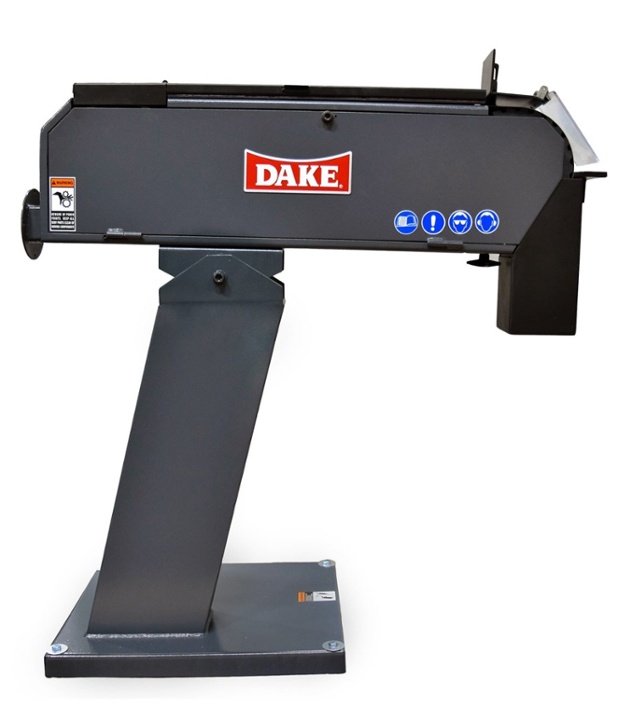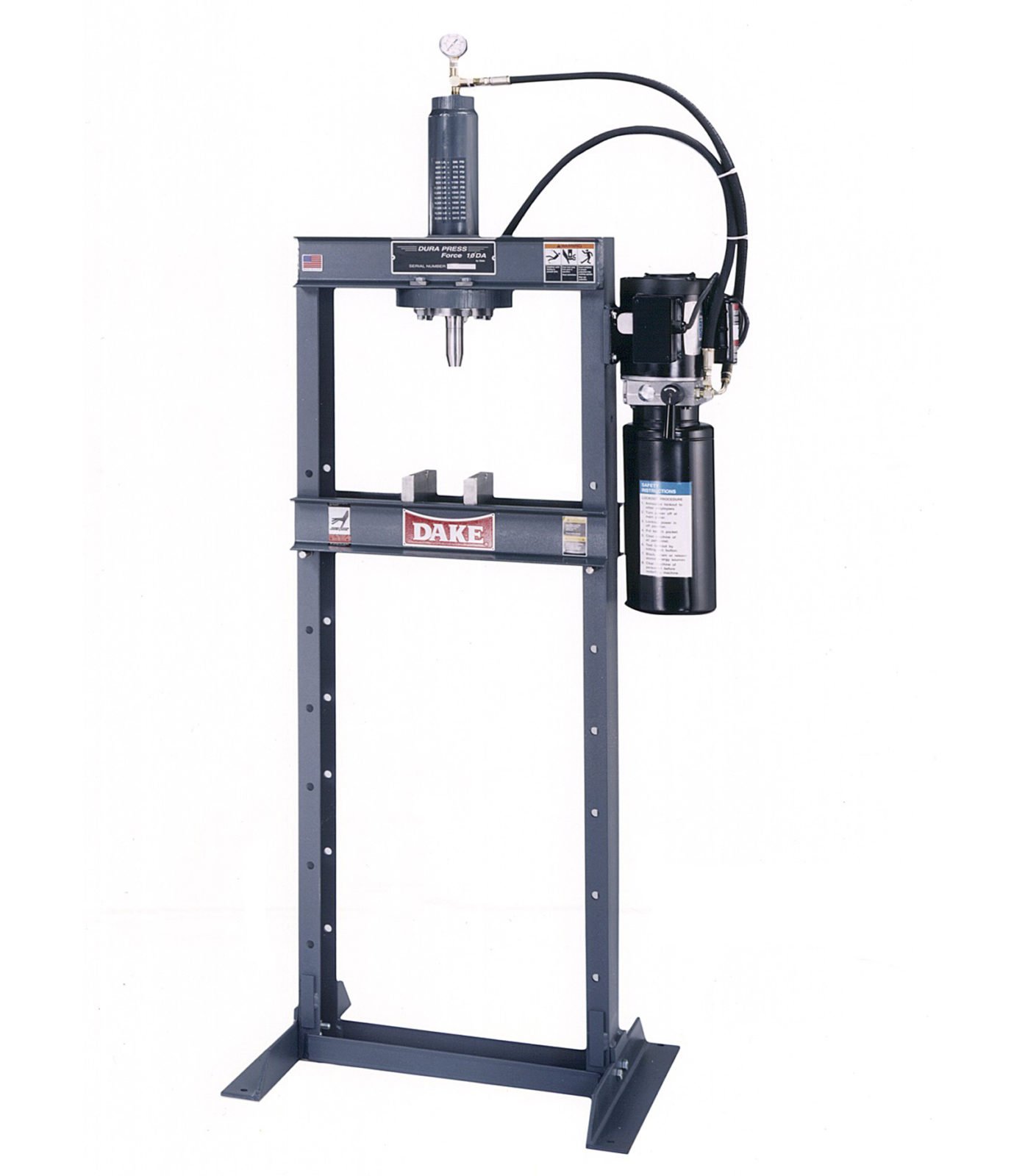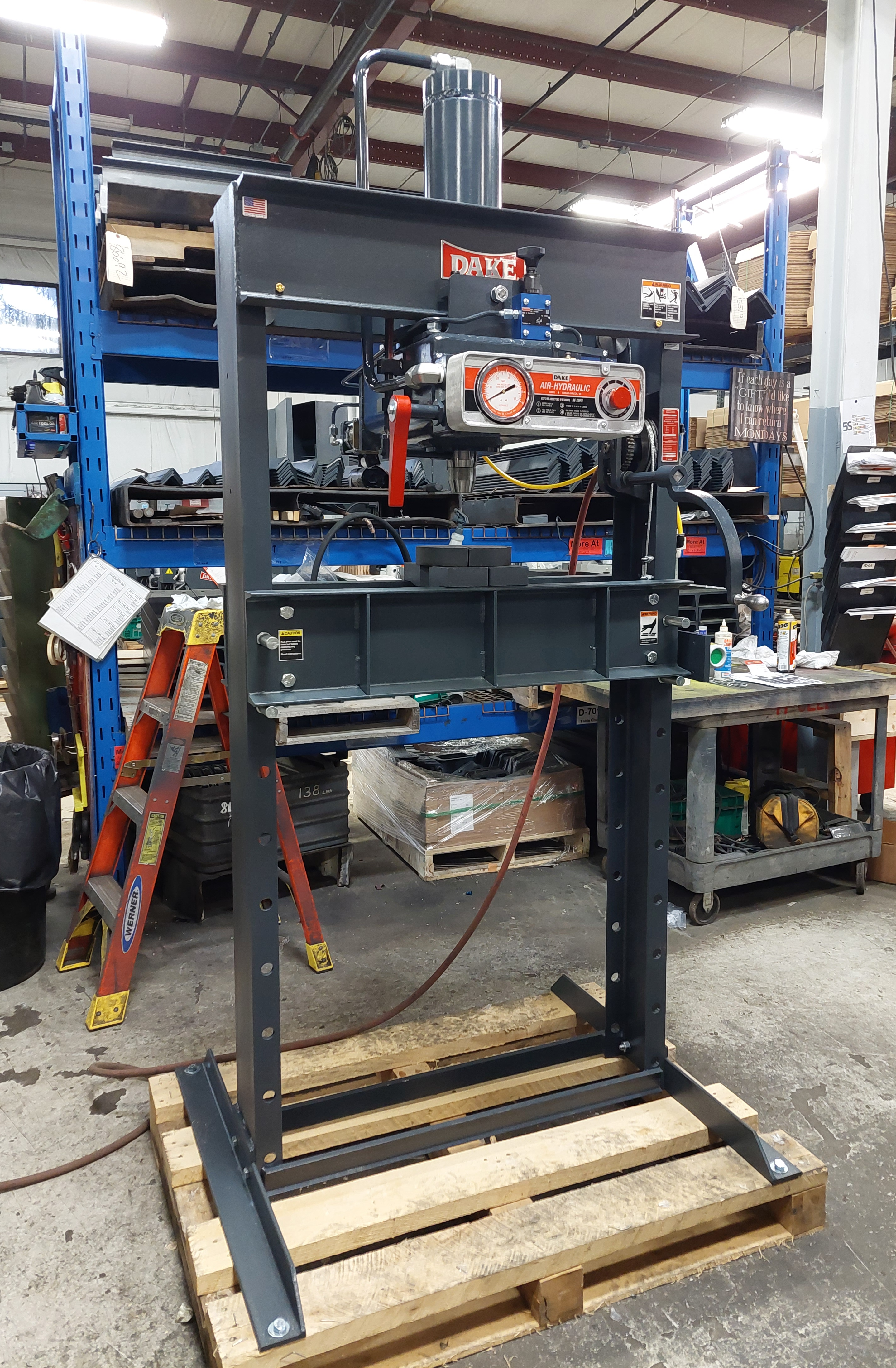All belt grinders are not created equal. As one of the most efficient models on the market, the Dake Belt Grinder G-75 is ideal for creating the perfect finish on any project.
Hand grinders take a much longer time to complete the task, and other large grinders simply can’t compare to our machine. While this may sound a bit biased, we proudly stand behind our machines here at Dake.
In this post, we will teach you how to optimize your belt grinder to save time and money while producing only top-quality finishes. From general metal fabrication to construction and shipbuilding, the Belt Grinder G-75 can handle anything you throw at it.
What Is Grinding?
Metal grinding is a key part of the welding and fabrication process. It is the process of smoothing out a metal piece. While it may look simple enough, there are certain techniques that every belt grinder operator should follow in order to optimize the machine.
Improper training on a belt grinder can result in extended project timelines, increased downtime of the machine, and even injury. To avoid issues with your belt grinder, we have five best practices to follow any time the machine is in operation.
1. Uneven Wear
Generally, uneven wear on a belt grinder machine is caused by too much pressure, uneven pressure, or grinding at too low of an angle. A combination of two or even all three could be the problem as well. However, our experts here at Dake have a simple trick to avoid uneven wear altogether.
First, you need to figure out what is causing the problem. To discover the culprit(s), follow these steps:
Always ensure that the adapting nuts are properly mounted and that the grinding wheel is tightened. Things can sometimes get out-of-whack when you go to mount the wheel to the machine. The nuts should be just tight enough to prevent wheel slippage, but they should also not be too tight. If the nuts are too tight, this can lead to damage to the wheel.
Next, ensure that the metal material you will be working with is secured tightly in place with a clamp. Little vibrations or rattling can lead to uneven wear.
Then, before you begin grinding the material, you should first let the machine run freely for a minute or so. This will allow you to check for any vibrations or flutters that could mean the wheel is improperly installed or unbalanced.
Finally, if you are experiencing uneven edge wear, try to remedy this by reducing the amount of pressure and increasing the angle from 25° to 30°. This minor adjustment can make a huge difference.
Pro Tip: Always use the minimum amount of pressure while grinding metal and keep the motion even across the wheel.
2. Cracked Wheel
If you use a material that is too hard for the wheel, this can result in cracking. This can also reduce the amount of control you have over the machine, decrease the cut rate, and shorten the lifespan on the wheel. Here are a few tips to avoid cracking the wheel.
First, always use a softer bond when you are grinding hard metals. On the other hand, you will need a stronger bond to grind soft metals like aluminum. By changing the hardness grade of your wheel, you can drastically reduce the risk of cracking. For example, switching from an R-grade wheel to an S-grade wheel can extend the life expectancy of the wheel by double.
Next, you should keep in mind that the hardness grades for wheels will vary depending on the manufacturer. Unfortunately, there is no standardization across the board when it comes to hardness. This means that you will need to speak with your distributor to learn more about the appropriate hardness for the jobs you typically undertake.
Finally, increasing the angle from 25° to 35° will drastically reduce the risk of wheel cracking, skipping, and chattering.
Pro Tip: If your wheel cracks during a grinding task, stop the machine immediately, and replace it. Never work with a cracked wheel.
3. Early Wheel Death
Wheel death occurs when the grinding wheel has reached the end of its lifespan. Your goal should be to preserve the life of your grinding wheel for as long as possible. Things that can reduce the life expectancy of your wheel include too soft of a bond, too much pressure, and using a steep angle to grind. Here are a few tips to avoid early wheel death.
First, consider using a hard bond/grit that will last longer and reduce the amount of pressure needed. You want the belt grinder to do the majority of the work.
Next, make sure that your tool is not underpowered or connected to the wrong extension cord. You’d be surprised how quickly a wheel can die when the wrong wire length or gauge is used inside the extension cord. To remedy this, always use a 1- or 12-gauge extension cord. This will ensure maximum power at all times.
4. Wheel Chatter
Chatter or vibrations can be classified in two ways. One is forced chatter, and the other is unforced chatter. Forced chatter is caused by an unbalanced wheel, a bad bearing, uneven wear, improper clamping, or even an improperly mounted wheel. Unforced chatter occurs as the wheel begins to dull over time. To fix chattering, follow these best practices:
First, make sure to clean and replace adapting nuts regularly.
Next, always check to see if the wheel is mounted flush to the machine with no gaps.
Then, replace any worn out bearings, and always check the bearing before running the machine. A knocking sound indicated a bad bearing.
Pro Tip: If you went through all of those steps and are still hearing chattering, then you can try adjusting the grinding angle.
5. Wheel Loading
Wheel loading occurs when the abrasive product gets clogged. This occurs when the metal material fills the space between the grit, and it is easy to spot. Read more about wheel loading here.
Wheel loading usually happens when you are working a lot with nonferrous, soft metals like aluminum. It can happen fairly quickly too. We recommend using a product that is specifically designed for softer metals.
Learn More at Dake
If you follow the aforementioned best practices, your Dake Belt Grinder G-75 will last for a long time. To learn more about your products, contact our team today.
-1.jpg?width=1200&height=525&name=DAKE003_%20Logos_Red%20(002)-1.jpg)

.jpg)

